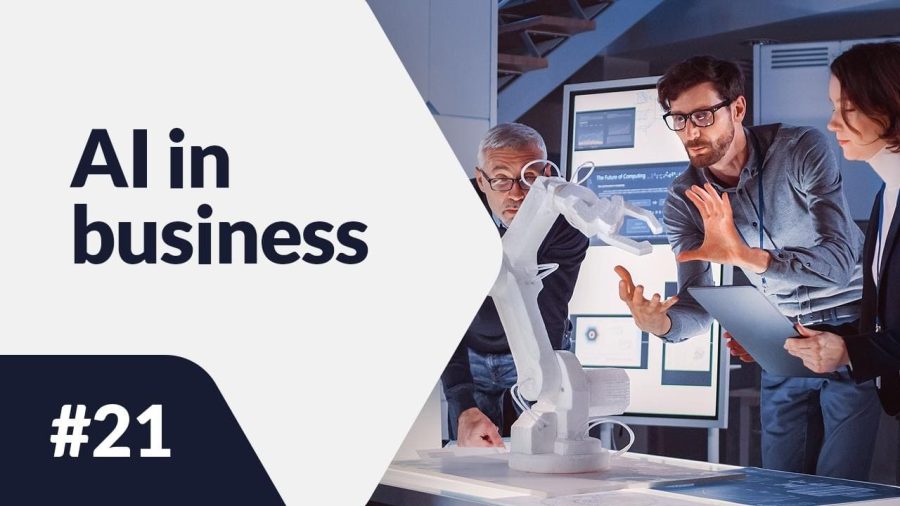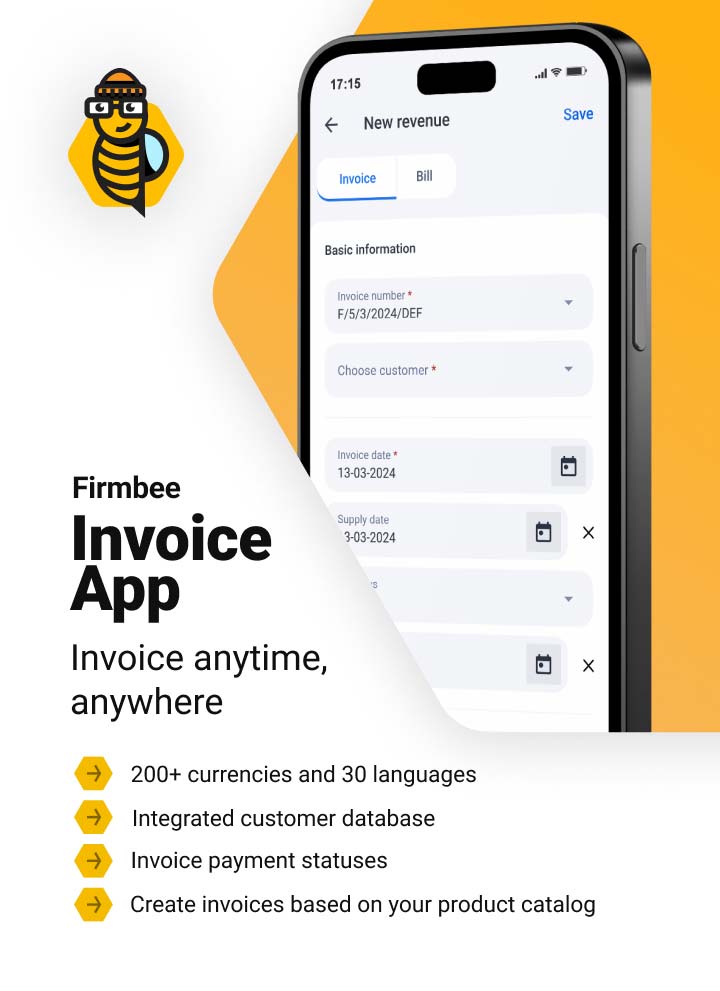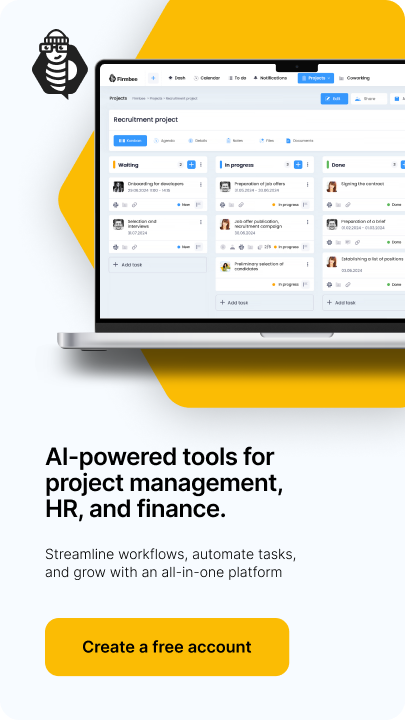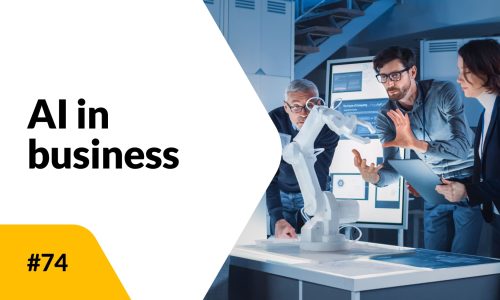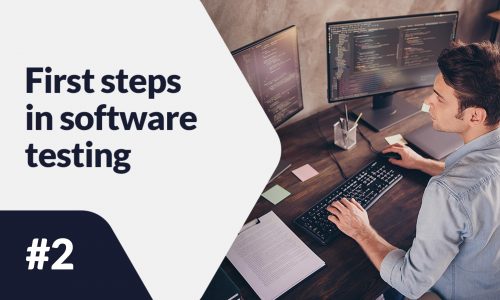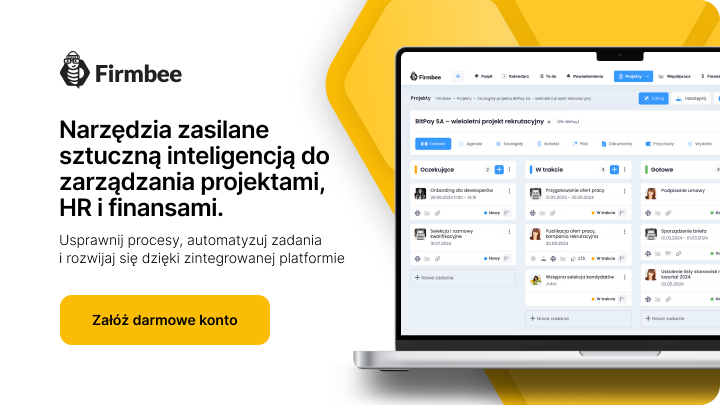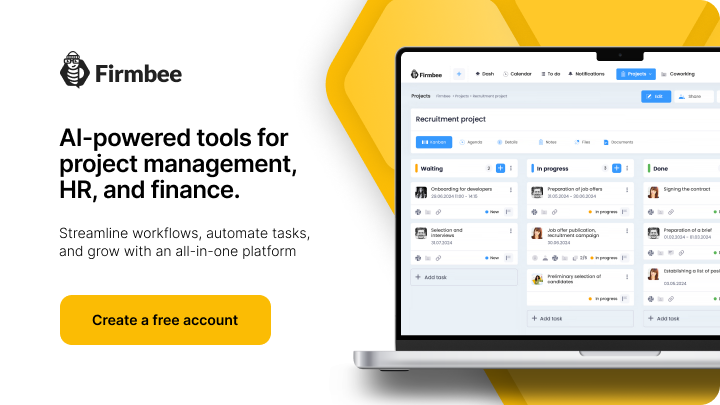Have you ever wondered how it is that you can simultaneously listen to music, read a book and recognize the smell of freshly brewed coffee? It’s all thanks to the human ability to process multiple types of data at the same time, i.e. the fact that we are multimodal beings. Bard, the intelligent chatbot from Google, has been multimodal since July 2023. Since October, ChatGPT has been enhanced to understand multiple types of information. Both can not only understand text but also read and visualize data, conduct voice conversation and recognize images. Multimodal AI is thus gaining even more potential to revolutionize the business world. Let’s take a closer look at it to understand the vast possibilities hidden in multitasking AI.
Multimodal AI - table of contents:
What is multimodal AI?
Multimodal AI is a highly advanced form of AI that mimics the human ability to interpret the world using content and data from different senses. Just as humans understand text, images and sounds, multimodal AI integrates these different types of data to understand the context and complex meaning contained in information. In business, for example, it can enable a better understanding of customer opinions by analyzing both what they say and how they express it through tone of voice or facial expression.
Traditional AI systems are typically unimodal, meaning they specialize in one type of data, such as text or images. They can process large amounts of data quickly and spot patterns that human intelligence cannot pick up. However, they have serious limitations. They are insensitive to context and less adept at dealing with unusual and ambiguous situations.
This is why multimodal AI goes a step further, integrating modalities. This allows for deeper understanding and much more interesting interactions between humans and AI.
What can multimodal AI do?
Artificial intelligence models developed today employ the following pairs of modalities:
- from text to image – such multimodal AI can create images based on textual prompts; this is a core capability of the famous Midjourney, the OpenAI-developed DALL-E 3, available in the browser as Bing Image Creator, the advanced Stable Diffusion or the youngest tool in the family, Ideogram, which not only understands textual prompts but can also place text on an image:
- From image to text – artificial intelligence can do much more than recognize and translate text seen in an image or find a similar product. It can also describe an image in words – as Midjourney does when you type the /describe command, Google Bard, and the Salesforce model (used mainly to create automated product and image descriptions on e-commerce sites,
- from voice to text – multimodal AI also empowers voice commands in Google Bard, but it is best performed by Bing Chat, as well as ChatGPT thanks to its excellent Whisper API, which copes with recognizing and recording speech along with punctuation in multiple languages, which can, among other things, greatly facilitate the work of international customer service centers, as well as prepare quick transcription of meetings and translation of business conversations into other languages in real-time,
- from text to voice – ElevenLabs’ tool allows us to convert any text we choose into a realistic-sounding utterance, and even “voice cloning,” whereby we can teach the AI its sound and expression to create a recording of any text in a foreign language for marketing or presentations to foreign investors, for example,
- from text to video – converting text to video with a talking avatar is possible in D-ID, Colossyan and Synthesia tools, among others,
- from image to video – generating videos, including music videos, from images and textual cues is already made possible today by Kaiber, and Meta has announced the release of the Make-A-Video tool soon,
- image and 3D model – this is a particularly promising area of multimodal AI, targeted by Meta and Nvidia, which enables the creation of realistic avatars from photos, as well as the building of 3D models of objects and products by Masterpiece Studio (https://masterpiecestudio.com/masterpiece-studio-pro), NeROIC (https://zfkuang.github.io/NeROIC/), 3DFY (https://3dfy.ai/), with which, for example, a two-dimensional prototyped product can be returned to the camera with a different side, a quick 3D visualization can be created from a sketch of a piece of furniture, or even a textual description:
- from image to movement in space – this modality makes multimodal AI reach beyond screens into the zone of the Internet of Things (IoT), autonomous vehicles and robotics, where devices can perform precise actions thanks to advanced image recognition and the ability to respond to changes in the environment.

Source: Ideogram (https://ideogram.ai)
Multimodal AI models are also able to follow textual cues and the image they are “inspired” by simultaneously. They offer even more interesting, more precisely defined results and variations of created images. This is very helpful if you just want to get a slightly different graphic or banner, or add or remove a single element, such as a coffee mug:

Source: Ideogram (https://ideogram.ai)
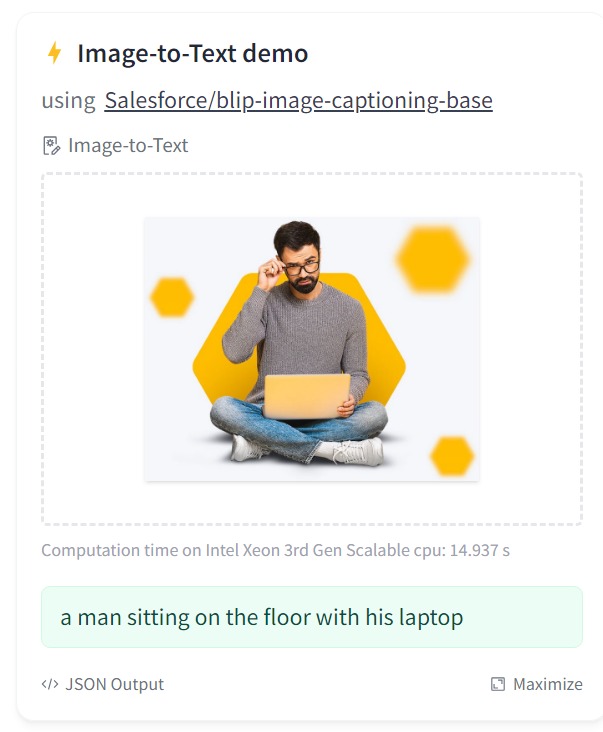
Source: HuggingFace.co (https://huggingface.co/tasks/image-to-text)
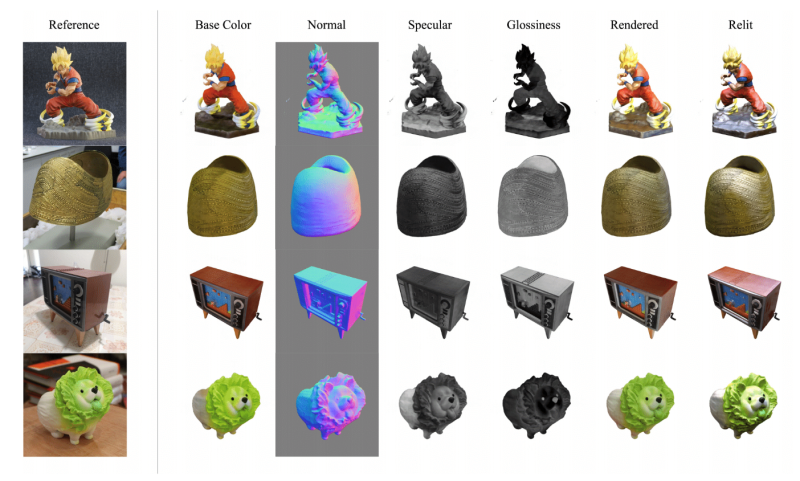
Source: NeROIC (https://zfkuang.github.io/NeROIC/resources/material.png)
There are also experiments with multimodal AI translating music into images, for example (https://huggingface.co/spaces/fffiloni/Music-To-Image), but let’s take a closer look at the business applications of multimodal AI. So how does the issue of multimodality play out in the most popular AI-based chatbots, ChatGPT and Google Bard?
Multimodality in Google Bard, BingChat and ChatGPT
Google Bard can describe simple images and has been equipped with voice communication since July 2023, when it appeared in Europe. Despite the variable quality of the image recognition results, this has so far been one of the strengths that differentiates Google’s solution from ChatGPT.
BingChat, thanks to its use of DALL-E 3, can generate images based on text or voice prompts. While it cannot describe in words the images attached by the user, it can modify them or use them as inspiration to create new images.
As of October 2023, OpenAI also began introducing new voice and image features to ChatGPT Plus, the paid version of the tool. They make it possible to have a voice conversation or show ChatGPT an image, so it will know what you’re asking without having to describe it in exact words.
For example, you can take a photo of a monument while traveling and have a live conversation about what’s interesting about it. Or take a picture of the inside of your refrigerator to find out what you can prepare for dinner with the available ingredients and ask for a step-by-step recipe.
3 applications of Multimodal AI in business
Describing images can help, for example, to prepare goods inventory based on CCTV camera data or identify missing products on store shelves. Object manipulation can be used to replenish the missing goods identified in the previous step. But how can multimodal chatbots be used in business? Here are three examples:
- Customer service: A multimodal chat implemented in an online store can serve as an advanced customer service assistant that not only answers text questions but also understands images and questions asked by voice. For example, a customer can take a picture of a damaged product and send it to the chatbot, which will help identify the problem and offer an appropriate solution.
- Social media analysis: Multimodal artificial intelligence can analyze social media posts, which include both text and images and even videos, to understand what customers are saying about a company and its products. This can help a company better understand customer feedback and respond more quickly to their needs.
- Training and Development: ChatGPT can be used to train employees. For example, it can conduct interactive training sessions that include both text and images to help employees better understand complex concepts.
The future of multimodal AI in business
A great example of forward-looking multimodal AI is the optimization of a company’s business processes. For example, an AI system could analyze data from various sources, such as sales data, customer data and social media data, to identify areas that need improvement and suggest possible solutions.
Another example is employing multimodal AI to organize logistics. Combining GPS data, warehouse status read from a camera and delivery data to optimize logistics processes and reduce costs of business.
Many of these functionalities are already applied today in complex systems such as autonomous cars and smart cities. However, they have not been at this scale in smaller business contexts.
Summary
Multimodality, or the ability to process multiple types of data, such as text, images and audio, promotes deeper contextual understanding and better interaction between humans and AI systems.
An open question remains, what new combinations of modalities might exist shortly? For example, will it be possible to combine text analysis with body language, so that AI can anticipate customer needs by analyzing their facial expressions and gestures? This type of innovation opens up new horizons for business, helping to meet ever-changing customer expectations.

If you like our content, join our busy bees community on Facebook, Twitter, LinkedIn, Instagram, YouTube, Pinterest, TikTok.
Author: Robert Whitney
JavaScript expert and instructor who coaches IT departments. His main goal is to up-level team productivity by teaching others how to effectively cooperate while coding.
AI in business:
- Threats and opportunities of AI in business (part 1)
- Threats and opportunities of AI in business (part 2)
- AI applications in business - overview
- AI-assisted text chatbots
- Business NLP today and tomorrow
- The role of AI in business decision-making
- Scheduling social media posts. How can AI help?
- Automated social media posts
- New services and products operating with AI
- What are the weaknesses of my business idea? A brainstorming session with ChatGPT
- Using ChatGPT in business
- Synthetic actors. Top 3 AI video generators
- 3 useful AI graphic design tools. Generative AI in business
- 3 awesome AI writers you must try out today
- Exploring the power of AI in music creation
- Navigating new business opportunities with ChatGPT-4
- AI tools for the manager
- 6 awesome ChatGTP plugins that will make your life easier
- 3 grafików AI. Generatywna sztuczna inteligencja dla biznesu
- What is the future of AI according to McKinsey Global Institute?
- Artificial intelligence in business - Introduction
- What is NLP, or natural language processing in business
- Automatic document processing
- Google Translate vs DeepL. 5 applications of machine translation for business
- The operation and business applications of voicebots
- Virtual assistant technology, or how to talk to AI?
- What is Business Intelligence?
- Will artificial intelligence replace business analysts?
- How can artificial intelligence help with BPM?
- AI and social media – what do they say about us?
- Artificial intelligence in content management
- Creative AI of today and tomorrow
- Multimodal AI and its applications in business
- New interactions. How is AI changing the way we operate devices?
- RPA and APIs in a digital company
- The future job market and upcoming professions
- AI in EdTech. 3 examples of companies that used the potential of artificial intelligence
- Artificial intelligence and the environment. 3 AI solutions to help you build a sustainable business
- AI content detectors. Are they worth it?
- ChatGPT vs Bard vs Bing. Which AI chatbot is leading the race?
- Is chatbot AI a competitor to Google search?
- Effective ChatGPT Prompts for HR and Recruitment
- Prompt engineering. What does a prompt engineer do?
- AI Mockup generator. Top 4 tools
- AI and what else? Top technology trends for business in 2024
- AI and business ethics. Why you should invest in ethical solutions
- Meta AI. What should you know about Facebook and Instagram's AI-supported features?
- AI regulation. What do you need to know as an entrepreneur?
- 5 new uses of AI in business
- AI products and projects - how are they different from others?
- AI-assisted process automation. Where to start?
- How do you match an AI solution to a business problem?
- AI as an expert on your team
- AI team vs. division of roles
- How to choose a career field in AI?
- Is it always worth it to add artificial intelligence to the product development process?
- AI in HR: How recruitment automation affects HR and team development
- 6 most interesting AI tools in 2023
- 6 biggest business mishaps caused by AI
- What is the company's AI maturity analysis?
- AI for B2B personalization
- ChatGPT use cases. 18 examples of how to improve your business with ChatGPT in 2024
- Microlearning. A quick way to get new skills
- The most interesting AI implementations in companies in 2024
- What do artificial intelligence specialists do?
- What challenges does the AI project bring?
- Top 8 AI tools for business in 2024
- AI in CRM. What does AI change in CRM tools?
- The UE AI Act. How does Europe regulate the use of artificial intelligence
- Sora. How will realistic videos from OpenAI change business?
- Top 7 AI website builders
- No-code tools and AI innovations
- How much does using AI increase the productivity of your team?
- How to use ChatGTP for market research?
- How to broaden the reach of your AI marketing campaign?
- "We are all developers". How can citizen developers help your company?
- AI in transportation and logistics
- What business pain points can AI fix?
- Artificial intelligence in the media
- AI in banking and finance. Stripe, Monzo, and Grab
- AI in the travel industry
- How AI is fostering the birth of new technologies
- The revolution of AI in social media
- AI in e-commerce. Overview of global leaders
- Top 4 AI image creation tools
- Top 5 AI tools for data analysis
- AI strategy in your company - how to build it?
- Best AI courses – 6 awesome recommendations
- Optimizing social media listening with AI tools
- IoT + AI, or how to reduce energy costs in a company
- AI in logistics. 5 best tools
- GPT Store – an overview of the most interesting GPTs for business
- LLM, GPT, RAG... What do AI acronyms mean?
- AI robots – the future or present of business?
- What is the cost of implementing AI in a company?
- How can AI help in a freelancer’s career?
- Automating work and increasing productivity. A guide to AI for freelancers
- AI for startups – best tools
- Building a website with AI
- OpenAI, Midjourney, Anthropic, Hugging Face. Who is who in the world of AI?
- Eleven Labs and what else? The most promising AI startups
- Synthetic data and its importance for the development of your business
- Top AI search engines. Where to look for AI tools?
- Video AI. The latest AI video generators
- AI for managers. How AI can make your job easier
- What’s new in Google Gemini? Everything you need to know
- AI in Poland. Companies, meetings, and conferences
- AI calendar. How to optimize your time in a company?
- AI and the future of work. How to prepare your business for change?
- AI voice cloning for business. How to create personalized voice messages with AI?
- Fact-checking and AI hallucinations
- AI in recruitment – developing recruitment materials step-by-step
- Midjourney v6. Innovations in AI image generation
- AI in SMEs. How can SMEs compete with giants using AI?
- How is AI changing influencer marketing?
- Is AI really a threat to developers? Devin and Microsoft AutoDev
- AI chatbots for e-commerce. Case studies
- Best AI chatbots for ecommerce. Platforms
- How to stay on top of what's going on in the AI world?
- Taming AI. How to take the first steps to apply AI in your business?
- Perplexity, Bing Copilot, or You.com? Comparing AI search engines
- ReALM. A groundbreaking language model from Apple?
- AI experts in Poland
- Google Genie — a generative AI model that creates fully interactive worlds from images
- Automation or augmentation? Two approaches to AI in a company
- LLMOps, or how to effectively manage language models in an organization
- AI video generation. New horizons in video content production for businesses
- Best AI transcription tools. How to transform long recordings into concise summaries?
- Sentiment analysis with AI. How does it help drive change in business?
- The role of AI in content moderation
